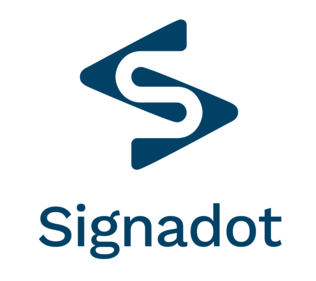Website: www.logicmonitor.com
Founder: Steve Francis
Headquarters: Santa Barbara, California
Year Founded: 2008
Twitter: @LogicMonitor
Brief Company Description: Hosted monitoring of networks, servers, applications, storage, cloud and virtualization. Monitoring, alerting, graphs, reports—out of the box.
 By Steve Francis, founder and Chief Product Officer
By Steve Francis, founder and Chief Product Officer
Product Overview
LogicMonitor is a hosted monitoring solution that monitors all elements of an IT Infrastructure—network, servers, applications, storage, cloud and virtualization—from a single pane. With embedded knowledge of most data center vendor’s equipment, LogicMonitor will tell you everything you need to know about the health and performance of your systems, and proactively alert you to any issues without you having to spend months becoming a monitoring expert, or purchase any costly hardware.
The all-in-one SaaS-based solution provides monitoring, alerting, graphing, and reporting right out of the box. So you can have robust monitoring not in weeks, or months, but today.
Founder’s Story
I ran network and data center operations for many different organizations—from the University of California system, the National Geographic Society, Fastclick (now part of ValueClick) and ExpertCity (now Citrix Online.) I also consulted for a variety of organizations. Nowhere that I worked had solved the monitoring issue well, and I never found a solution that was well suited to the needs of web-based companies. Monitoring was always a pain point—there was too much reliance on manual processes to add things to monitoring; too much expectation that the end user of the equipment would know what to monitor.
Have you ever looked at the MIB for a Cisco router? Or a Citrix netscaler? There are literally thousands of possible objects to monitor—some of which should be monitored, some of which should not. Same for the objects exposed by Tomcat via JMX—there’s lots of data, some of which is really important. But to tell an IT sysadmin that you can monitor Cisco routers, or Tomcat, because the software can talk SNMP or JMX—it’s like saying you sell fine paintings, and then giving someone a canvas and set of paints and telling them to do it yourself. The sysadmin, who already has way too much to do, doesn’t want to figure out what matters on his new device or software. And he often won’t have the operational experience with it to know, as it’s new to him.
The other pain I had was that people, even good sysadmins, are imperfect. If they make changes in the heat of a technical issue, such as creating a new storage volume, or virtual IP on a load balancer—they will intend to add this into monitoring later—and often forget. Then six months later there’ll be another issue that should have been caught by monitoring, but wasn’t, as the new object was never added to monitoring.
When I was consulting, many of the problems I was diagnosing and solving required good monitoring and trending—and just getting the data was consuming a fair bit of time. I realized that if I could address these common needs in a way that let people get best of breed monitoring, without having to be monitoring experts, they’d save a lot of time, and improve infrastructure availability. A few months of market validation later, and LogicMonitor was born.
LogicMonitor addresses the needs I had when I was in charge of complex infrastructure. We actually do go through the MIBs, Mbeans, database data, etc., and figure out what should be monitored, for all sorts of hardware and software.
We also automate the discovery and configuration of the monitoring—when you add a NetApp to LogicMonitor, because we have knowledge of what should be monitored (volumes, CPUs, snapshots, snapmirrors, etc.), we can go and automatically discover those objects—and we periodically check for changes, so if you add or change volumes, or snapvaults, or whatever—the monitoring knows, automatically.
LogicMonitor deals with the case where there may be 100 web servers, some production, some staging, some QA, so different credentials and alert policies should be applied to each group. It gives you expert monitoring, without requiring you to be a monitoring expert.
Marketing/Promotion Strategy
We’re mostly based on inbound marketing. IT people generally aren’t receptive (or even reachable) by outbound techniques—but if you have a real solution to the problem they are looking for, they’ll happily reach out. So we’ve tried to make it clear from our web content and other campaigns that we really do solve their problems. Because we solve a major pain point, customer referrals are becoming a significant source of new customers for us.
We also have a channel program consisting of strategic partners and service providers that resell our service.
How we differentiate from the competition
Most monitoring tools are extremely difficult to configure and take months of costly staff time to get working. LogicMonitor, with its automation and pre-defined templates, can be up and running in just minutes.
LogicMonitor also monitors many more devices than other monitoring tools, eliminating the need to buy and maintain a bunch of point solutions. It provides an end-to-end view of all your infrastructure and applications from a single, affordable solution.
Then there are the SaaS advantages.
1. Faster implementation
We can realistically get people monitoring their first devices within 5 minutes of a call, and multiple data centers, with appropriate alert routing and escalations, within 2 days),
2. Higher levels of support
Customers can choose to allow us access to their portal, and if they do, we can create custom graphs for them, or help them audit and review their alerts. It also lets us roll out improvements we find in one case to all our customers.
Our customers don’t just get our operational experience (which, with our team, is quite substantial)—they also get the operational experience of all the thousands of hosts we are monitoring.
3. Greater reliability
With premise-based monitoring systems, if your network goes down, so does your monitoring. With LogicMonitor, alerts come from our servers. So even if your network goes down, your monitoring remains in-tact, and you’ll still receive alerts.
4. Less risk
No upfront costs. No hardware to buy. No systems to maintain. Free upgrades. Month-to-month. Cancel if your needs change.
Business Model
We charge based on the number of hosts being monitored—it doesn’t matter what kind of device or how many metrics are collected. Pricing starts at $99/month for five hosts, and the per host price drops rapidly with scale.
Current Needs
We’re always looking for excellent systems engineers with operational experience, and new customers to relieve from monitoring woes!
LogicMonitor – www.logicmonitor.com










